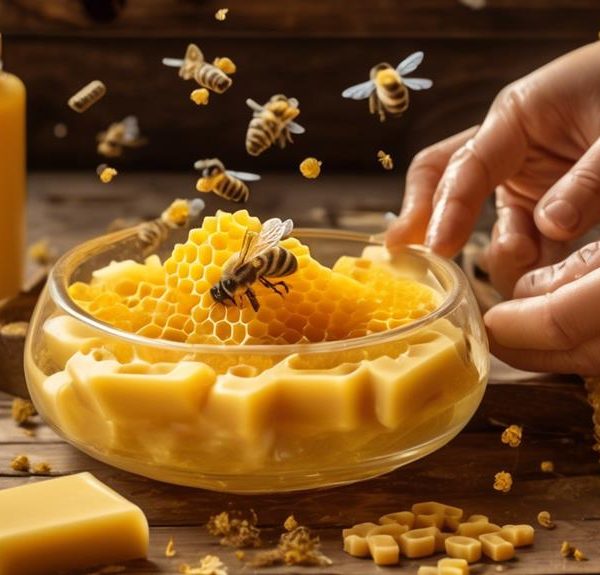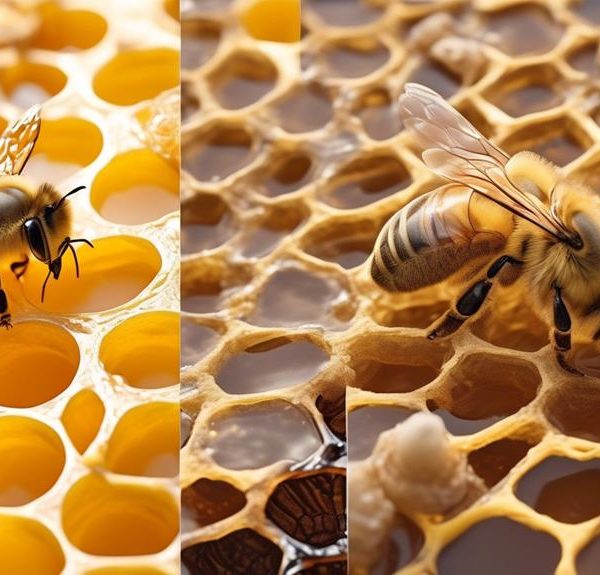Honey, they're more than just a sting; learn how bees can cause significant structural damage to your home.
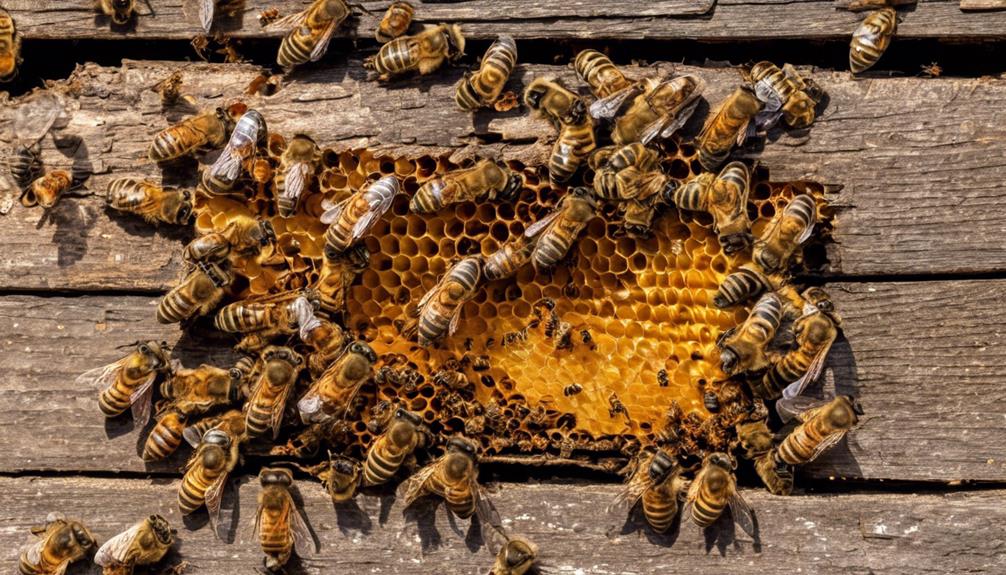
Can Bees Cause Structural Damage?
Have you ever thought about the power of the tiny bee, not just in pollinating our crops but in its potential to wreak havoc on our homes? You might be surprised to know that your buzzing friends can cause more than just a sting, they can also cause structural damage.
Yes, bees. The same creatures that provide us with sweet honey can also burrow into your home's structure, compromising its integrity. The extent of this damage can be quite significant, sometimes requiring professional intervention.
Intrigued? Let's explore just how these seemingly harmless insects can create such a predicament.
Key Takeaways
- Bees can cause structural damage by boring holes and creating nests within walls, weakening the integrity of a home.
- Honey produced by bees can seep into building materials, causing damage and potentially leading to sagging or collapse of structures.
- The moisture and heat generated by a bee colony can create a humid environment, promoting mold growth.
- Professional exterminators should be hired for safe and humane removal of bees, followed by thorough cleaning and sealing of the infested area to prevent future invasions.
Understanding Bee Infestations
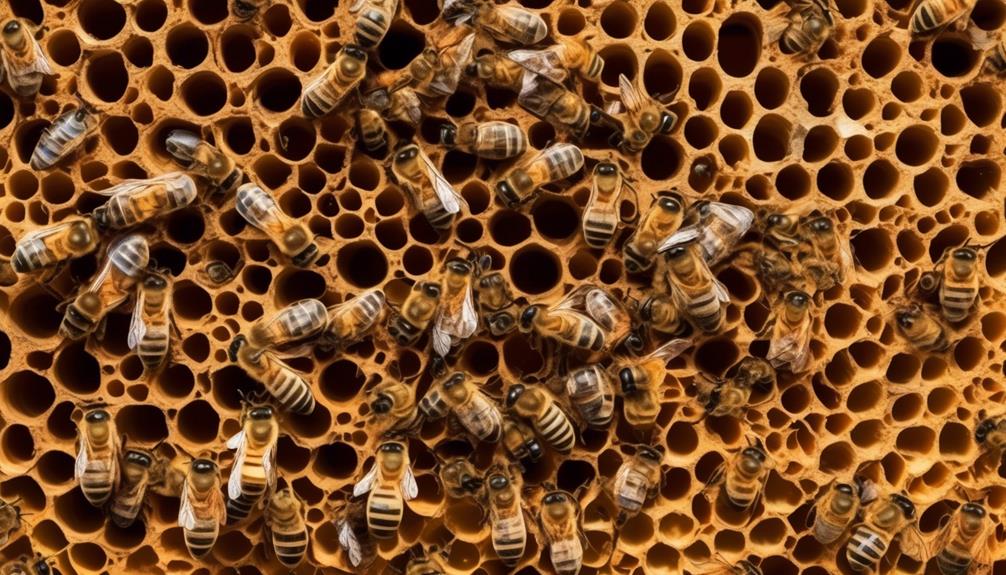
To fully grasp the potential harm of bee infestations, you must first understand their behavior, population dynamics, and the structural preferences that dictate their nesting choices.
Bees are eusocial insects, meaning they live in highly organized colonies. The population of a colony can range from a few hundred to tens of thousands, predominantly consisting of worker bees, which are all female, and only one queen bee.
Their nesting behavior is influenced by species, but generally, bees prefer dark, enclosed spaces. They're attracted to structures with pre-existing holes or cavities, often choosing to nest in trees, walls, or roofs. Bee nests, or hives, are made from wax secreted by worker bees and can become quite large, depending on the size of the colony.
Over time, these hives can cause significant structural damage, particularly if they're in your home. The weight of a large hive, full of bees, honey, and wax, can strain and weaken structures. Additionally, if a hive is disturbed or the bees feel threatened, they can become aggressive, posing a risk to those nearby.
Therefore, understanding bee infestations is critical to preventing and managing potential damage.
How Bees Enter Structures
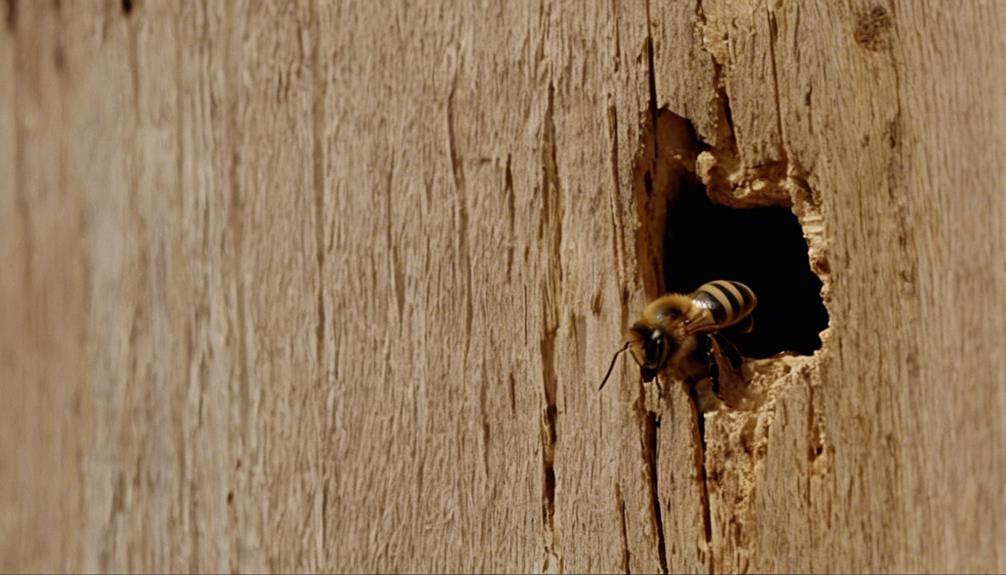
Understanding your home's vulnerabilities to bees is crucial, as these crafty insects exploit even the smallest openings to gain access to structures. They're highly explorative and will seize any opportunity to enter and establish a nest, requiring only a small gap of about 1/8 inch.
Often, bees infiltrate through structural deficiencies like cracks in walls, gaps in window frames, or openings in roof soffits. They're also attracted to moisture, so leaking pipes or damp wood can be an inviting entry point. Additionally, bees may utilize existing openings such as air vents, utility conduits, or chimneys, converting these into pathways to your home's interior.
If the structure has previous insect damage, it's even more susceptible. Old termite holes or abandoned wasp nests provide perfect access points. Similarly, rotting wood or disintegrating mortar joints are easily exploited by bees.
Once inside, they can build nests within wall cavities, attics, or even beneath floors. This is where the structural damage potential escalates. Remember, these aren't random invasions. Bees are strategic, always on the lookout for suitable habitats. Understanding how they gain entry helps you to implement effective preventive measures, safeguarding your home against bee infestations.
Types of Damage Bees Cause
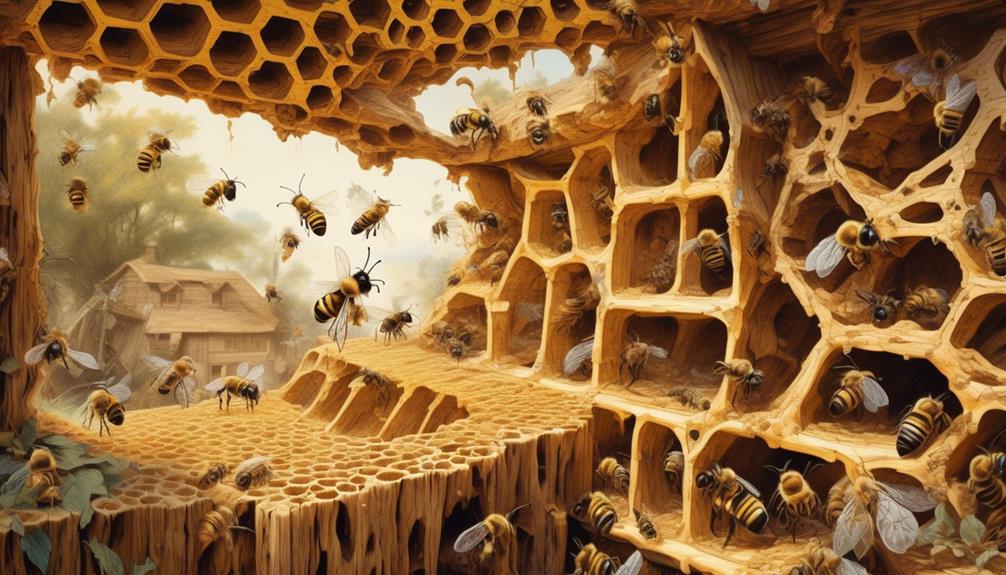
You might be surprised to learn that bees, despite their small size, can cause significant structural damage to your home, in a number of ways.
Essentially, bees damage structures by boring holes and creating nests. These nests aren't just minor inconveniences; they can lead to long-term deterioration of your home's structure.
Firstly, the large and intricate nests that bees construct within walls can weaken the structural integrity of your home. These nests, made up of wax, can occupy sizeable spaces, thereby creating internal pressure against drywalls, ceilings, and insulation materials.
Secondly, the honey produced by bees can cause substantial damage if it seeps into the building materials. Honey not only stains and discolors walls, but its weight can also cause sagging or even collapse of structures over time. Plus, it can attract other pests, exacerbating the problem.
Lastly, the moisture from honey, coupled with the heat generated by the bee colony, creates a humid environment. This humidity can lead to mold growth, which further weakens the affected structures and can lead to potential health risks.
Remediation Methods for Bee Damage
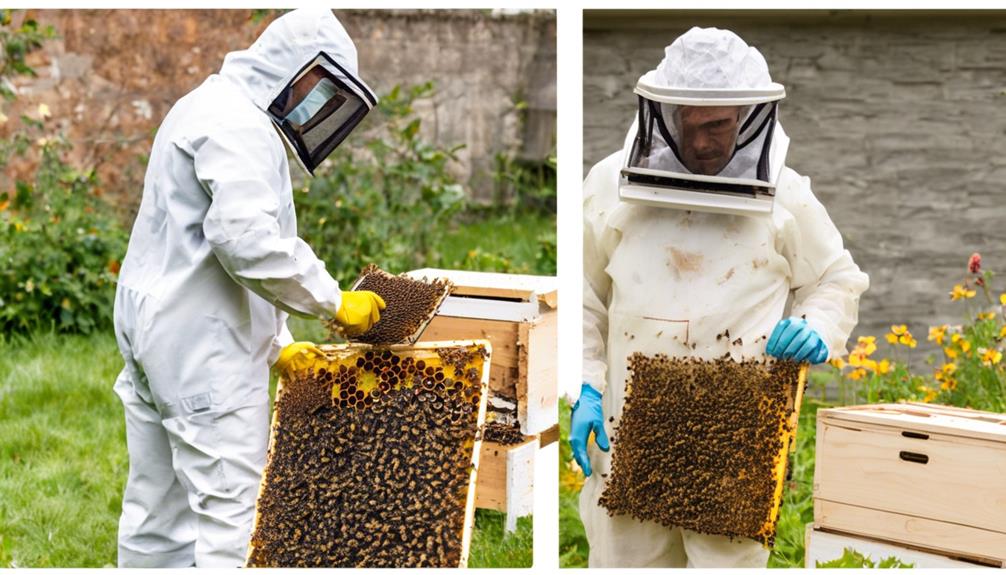
Given the structural and potential health risks posed by bee infestations, it's crucial to explore effective remediation methods to rectify and prevent further damage. Initially, you need to identify the species of bee involved, as different species require unique handling methods.
Professional exterminators should be your first choice to eliminate the bees safely and humanely, given their specialized training and equipment. They utilize various techniques such as the use of organic compounds, insecticides, or bee vacuuming, depending on the bee species and infestation size.
Following extermination, it's essential to remove all traces of the hive and clean the area thoroughly. Bee pheromones can attract other bees, leading to a recurring infestation. The infested area should then be sealed to prevent future bee invasions.
Lastly, consider preventive measures such as regular inspections, especially in spring and summer when bees are most active. You can also install physical barriers or use repellents to deter bees.
Preventing Future Bee Infestations
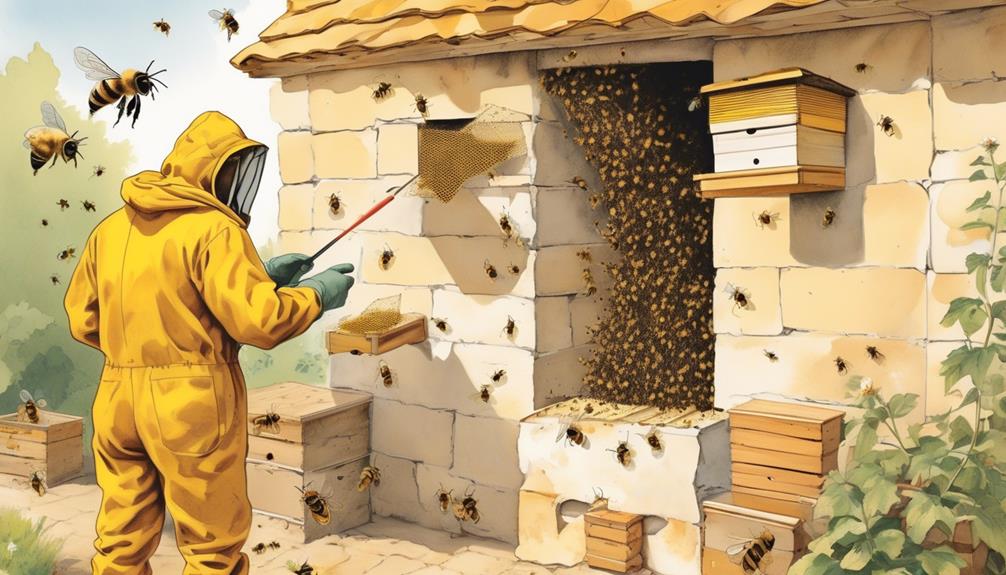
To effectively thwart future bee infestations, it's crucial to adopt a proactive approach that includes regular property inspections, installation of physical barriers, and use of repellents.
Regular inspections help identify potential nesting sites and signs of early infestation. This can include spotting bees frequenting certain areas, or finding beeswax, honey, or bee droppings.
Physical barriers can be installed to prevent bees from accessing your property. This includes sealing cracks and holes in walls, roofs, and foundations. Mesh screens can be installed over vents, windows, and other openings.
Repellents are also an effective method. Certain natural substances, like citrus peel extract and cinnamon, are known to deter bees. Synthetic repellents are available too, but it's important to remember that bees are beneficial insects. Therefore, less harmful repellents are preferred.
Frequently Asked Questions
What Attracts Bees to a Specific Structure or House?
You're right to wonder what attracts bees to a specific structure or house. Predominantly, they're drawn to areas where they can find food and water. They're attracted to floral scents, bright colors, and sweet substances. Bees also seek out spaces where they can build their hives, such as in your walls, attics, or trees nearby.
They're particularly drawn to structures with little human activity. So, your home's location, color, and the presence of potential food sources can all be factors.
Are Certain Types of Structures More Susceptible to Bee Damage Than Others?
Yes, certain structures are more susceptible to bee damage. You'll find that structures with lots of crevices, such as wood siding or brick walls, can be ideal for bees to build their nests in.
Older, deteriorating buildings also provide plenty of entry points for bees. So, you're more likely to see bee damage in these types of structures than in newer, more sealed buildings.
Can Bees Cause Damage to Other Areas Apart From Buildings, Such as Gardens or Vehicles?
Yes, bees can indeed cause damage to other areas aside from buildings. They're known to burrow into wooden structures of vehicles, compromising their integrity.
In gardens, bees can harm certain plant species while collecting nectar and pollen. Additionally, their nests in the ground can create hazards for gardening equipment.
What Are the Health Risks Associated With Bee Infestations?
Yes, you're at risk when dealing with bee infestations.
If you're allergic, stings can be life-threatening.
Repeated stings, even for those not allergic, can lead to serious issues like kidney damage or anaphylaxis.
Bees also carry diseases that can affect humans.
Prolonged infestations can lead to mold from bee droppings, posing additional health risks.
Always consult a professional if you're dealing with an infestation.
Are There Any Legal Implications for Not Dealing With a Bee Infestation?
Yes, you may face legal implications for not addressing a bee infestation. Depending on local laws, you're generally expected to maintain your property in a safe and healthy condition. If you neglect a bee infestation and it causes harm to others, you can be held responsible.
It's also possible that you'll violate local health codes, which could lead to fines. So, it's wise to deal with bee infestations promptly and properly.
Conclusion
In conclusion, while bees play a crucial role in our ecosystem, their infestations can cause significant structural damage. They can infiltrate your property, creating honeycombs that weaken structures.
Remediation methods are available, but prevention is key. By understanding their habits and taking appropriate measures, you'll be better equipped to prevent bee infestations and the associated damage.
Remember, it's not just about removing bees, but ensuring they don't return.

